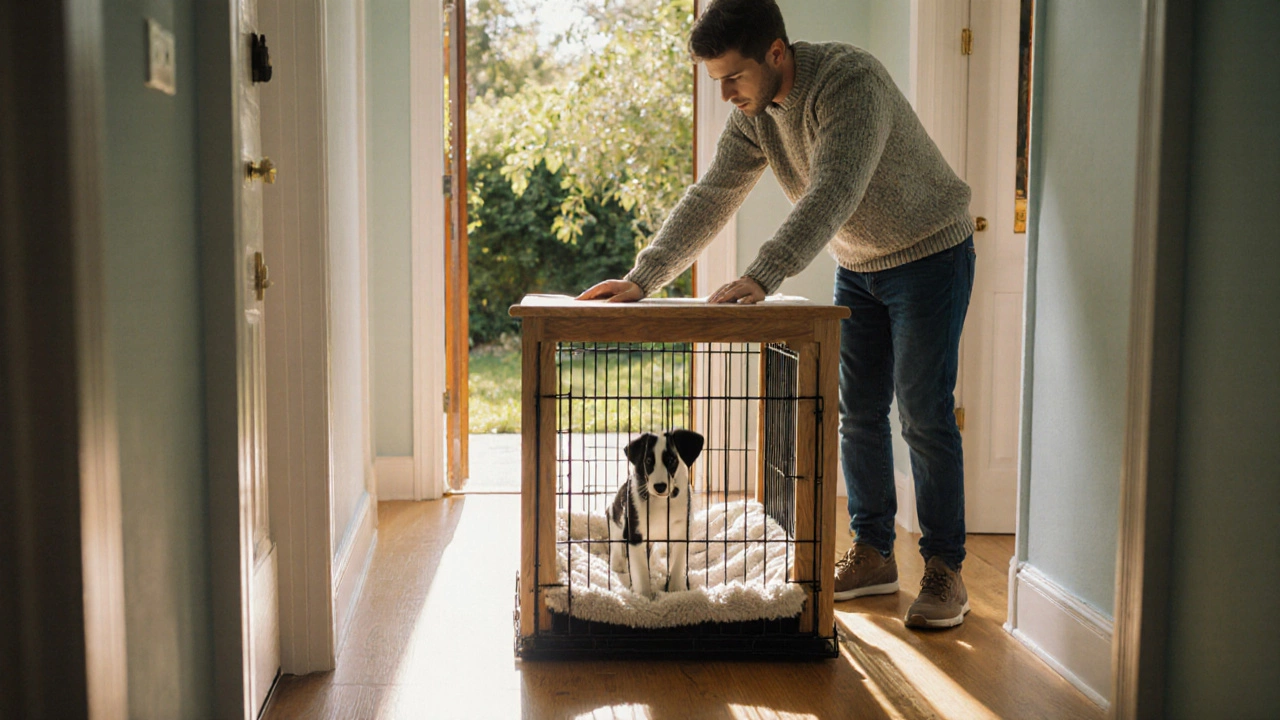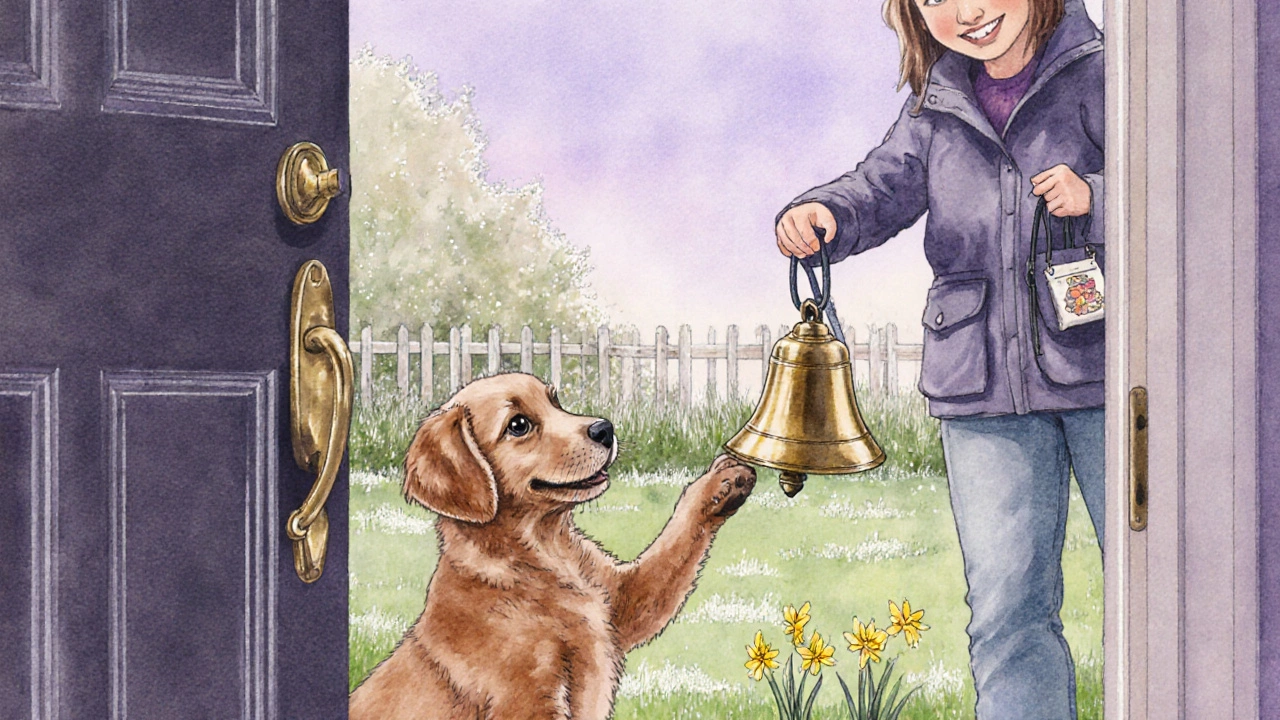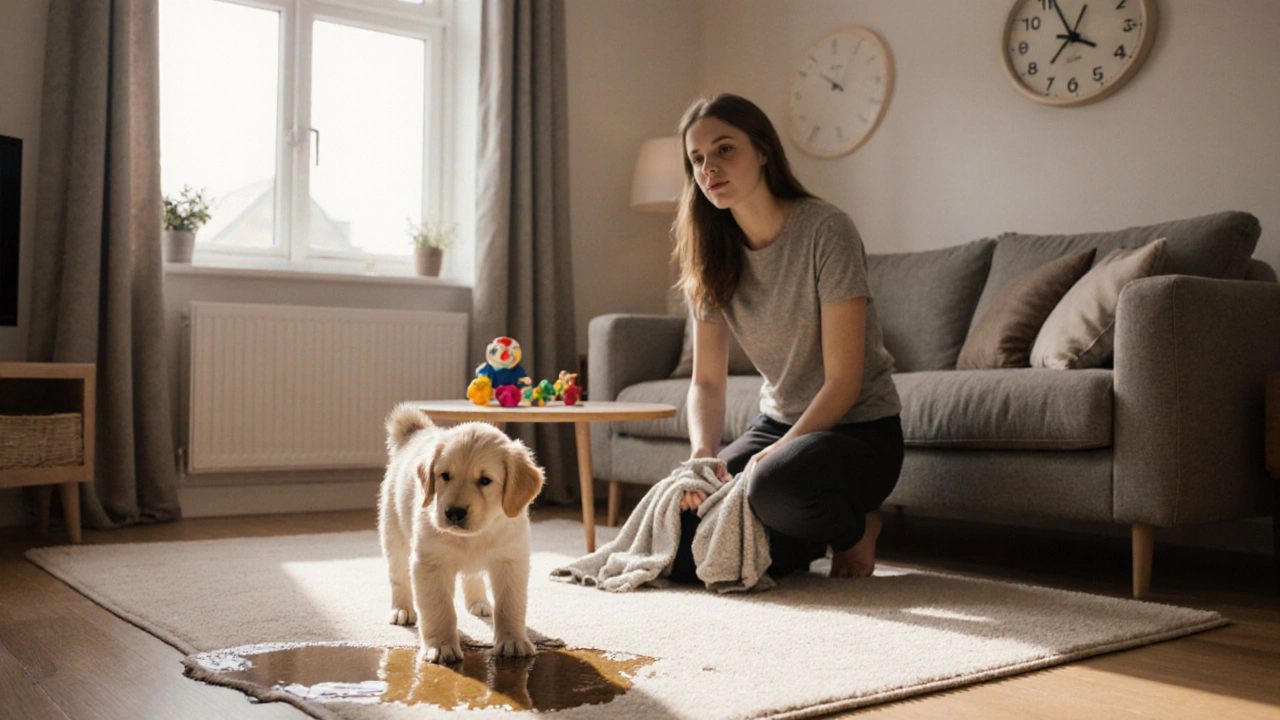Puppy Potty Schedule Calculator
How to Use This Tool
Enter your puppy's feeding times and age to generate a customized bathroom schedule. The calculator shows when to take your puppy outside for maximum success.
Your Puppy's Schedule
When a new pup turns your living room into a bathroom, the frustration can feel endless. The good news is that with a clear plan, consistency, and the right tools, you can teach your puppy to go outside every time. Below is a step‑by‑step guide that covers everything from why accidents happen to how to keep them from happening again.
Understanding the Basics of puppy potty training
Every puppy is born with a tiny bladder and an even tinier sense of time. Their urinary and digestive systems mature at different rates, which means they can’t hold it for long periods during the first weeks. Knowing this helps you set realistic expectations: you won’t eliminate accidents overnight, but you can speed up the learning curve by matching the routine to their developmental stage.
Step 1: Establish a Predictable Schedule
- Feed at the same times each day. A regular feeding schedule leads to predictable bathroom breaks.
- Take the puppy outside first thing in the morning, after every meal, after play sessions, and immediately after waking from naps.
- Keep a log (a simple notebook or phone app works) to track the time between bathroom trips. Over a week you’ll spot the pattern and can fine‑tune the schedule.
Consistency is the secret sauce-if you vary the times, the puppy’s internal clock gets confused, and accidents rise.
Step 2: Choose the Right Training Tool
Most owners rely on either a crate, a playpen, or a designated indoor potty area. Each has pros and cons, so pick the one that fits your lifestyle.
| Feature | Crate | Playpen | Potty Pad |
|---|---|---|---|
| Space restriction | High - mimics den, reduces anxiety | Medium - gives more room to move | Low - little restriction, good for apartments |
| Training speed | Fast - puppy learns to hold it | Moderate - needs more supervision | Slow - may delay outdoor habit formation |
| Accident cleanup | Minimal - confined area | Moderate - larger area to cover | High - pads need frequent changes |
| Best for | Homes with a yard and regular outdoor access | Owners who can supervise many hours per day | Rented spaces where outdoor trips are limited |
For most new owners, a properly sized crate works best. It taps into a dog’s natural den instinct and gently teaches them to control their bladder until they’re let out.

Step 3: Teach a Clear Cue
Use a single word or phrase-like “go potty” or “outside”-every time you bring the puppy out. Pair the cue with a brief pause so the pup learns that the phrase signals the right spot.
- Open the door, say the cue, and wait 10‑15 seconds.
- If the puppy lifts a leg or squats, immediately praise with a happy tone and a Positive reinforcement treat.
- If nothing happens, gently place the puppy on the grass and repeat the cue.
Consistency in the cue builds a mental link: sound → action → reward.
Step 4: Clean Accidents the Right Way
When a mishap occurs, the biggest mistake is using regular detergent. It can leave a scent that encourages the puppy to use the same spot again. Instead, use an Enzyme cleaner that breaks down the urine proteins.
- Blot the wet area with paper towels-don’t rub.
- Apply the enzyme cleaner generously and let it sit for the recommended time (usually 10‑15 minutes).
- Allow the spot to air‑dry; avoid using heat which can lock the odor in.
Proper cleaning removes the scent cue, making it less likely the puppy will revisit the same spot.
Step 5: Add a “Bell” Signal for Door Awareness
Training a puppy to ring a small bell before going out adds an extra layer of communication. It works especially well for homes where the front door is far from the living area.
- Hang a bell on the door handle at the puppy’s height.
- Each time you take the pup out, gently tap the bell with its paw and say the cue.
- Reward the puppy for touching the bell on its own. Over a week the dog learns that ringing the bell means ‘go outside.’
Bell training reduces missed trips and gives you a visual cue that the puppy needs a bathroom break.

Step 6: Troubleshoot Common Problems
Even with a solid plan, hiccups happen. Here’s how to address the most frequent setbacks:
- Frequent accidents after sleep: Puppies often need to go right after waking. Add a bathroom break within five minutes of any nap.
- Skipping the outdoor cue: If the puppy is distracted, lower the excitement level. Use a leash to guide them to the designated spot.
- Inconsistent schedule due to work trips: Bring a portable crate or a pee pad for short absences, and resume the outdoor routine as soon as you return.
- Medical issues (e.g., urinary tract infection): Persistent accidents despite consistent training warrant a vet check. Veterinarian can rule out infections or bladder stones.
Addressing these issues early prevents bad habits from becoming entrenched.
Key Takeaways
- Set a strict feeding and bathroom schedule.
- Use a properly sized crate to encourage bladder control.
- Pick a single cue word and pair it with immediate praise.
- Clean accidents with enzyme cleaners to erase scent cues.
- Consider bell training for clear door‑to‑outside communication.
- Watch for medical red flags and consult a veterinarian if needed.
Frequently Asked Questions
How often should I take my puppy outside?
A newborn puppy needs a bathroom break every 1‑2 hours. As they grow, you can stretch intervals to 3‑4 hours, but always keep the post‑meal and post‑nap rules.
Is it okay to use pee pads inside the house?
Pee pads can be a temporary solution for apartments, but they often delay outdoor housebreaking. If you plan to transition outdoors, limit pad use to a single area and gradually move it closer to the door each week.
My puppy urinates in the same corner every night. What should I do?
First, clean the spot with an enzyme cleaner to remove the scent. Then, place the crate in a different part of the room or add a night‑time bathroom break right before bedtime.
Can I train my puppy to use a specific spot in the yard?
Yes. Choose a small patch of grass, bring the puppy there on every cue, and reward immediately. Consistency will make that spot the go‑to bathroom area.
My puppy still has accidents after two weeks. Is that normal?
Two weeks is still early; many puppies need 4‑6 weeks to fully grasp the routine. Keep the schedule tight, reward each success, and monitor for any health issues.
